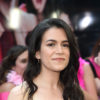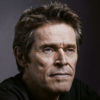Devendra Banhart has released eight albums worth of alternately gentle and psychedelic pop music. They routinely hit the Billboard charts, and they’ve garnered him a cult-like following. He’s also collaborated with the likes of Beck and Antony and the Johnsons… but meanwhile, he’s pursued a parallel career as a fine artist.
His work’s been shown in galleries around the world, and at both the San Francisco Museum of Modern Art and The Museum of Contemporary Art, Los Angeles. And his latest project is an art book called “I Left My Noodle On Ramen Street,” showcasing everything from composed drawings, to off-the-cuff photos, to snippets from Banhart’s sketchbooks.
This Sunday, June 28th, the Los Angeles County Museum of Art hosts a release party for the book. In advance of which Banhart sat down with Rico to talk about mystical skateboards, useful music, and ancient honey.

Rico Gagliano: The curator Jeffrey Deitch writes in his foreword to this book that you were first exposed to non-mainstream music through watching skateboard videos. Do you remember skater visual art and graphics impacting you?
Devendra Banhart: The graphics from a lot of those Powell skateboards were totally mystical to me.
I mean, maybe the first time I… See, that’s the thing: I grew up reading Hindu comic books. I have these Eastern-influenced parents, so I have these comic books about the story of Ganesh, and Shiva, and the illustrated Bhagavad Gita. And I remember the first time I saw… some skater had this giant, regal elephant on their deck. And I immediately recognized it as Ganesh! And I was like, “Oh, wow, that’s cool!”
 Rico Gagliano: The Hindu elephant god.
Rico Gagliano: The Hindu elephant god.
Devendra Banhart: Yeah! And, I think that you feel connected to it because you already know it, you recognize it. And then you just want to know more about it, I guess.
But when did I feel like I wanted to be an artist? Actually, that happened in LACMA.
Rico Gagliano: The Los Angeles County Museum of Art.
Devendra Banhart: Yeah. They were showing a Robert Frank film called “Pull My Daisy,” and that changed my life. My mom thought I was high when she picked me up.
Rico Gagliano: Literally?
Devendra Banhart: Literally! She was like, “What are you on?” Because I was… it’s just something about it.
Rico Gagliano: How old were you?
Devendra Banhart: I must have been 15.
Rico Gagliano: Can you describe it, for those who haven’t seen it?
Devendra Banhart: It’s narrated by Jack Kerouac, and I think written by him. And Alan Ginsberg is in it, and a couple of the other beat poets. It’s shot in black and white. It’s in New York. And it tells a little bit of the story of this family having a party… and there’s a kid that comes in and out… Jack is narrating…
Maybe it was this one line: One of the guys is drunk and drinking beer and talking to a priest, and he’s like, “Is cockroach holy? Is grilled cheese holy?” Something about that — I remember that always stayed with me.

Rico Gagliano: It’s interesting that the two examples you’ve given so far, the Ganesh god skateboard and the movie — and specifically a line about holiness — both of these seem concerned the idea of mysticism. And that’s a word that has been ascribed to your art a lot.
So I wonder can we talk about… there’s a series of drawings at the beginning of your book that really seem to speak to this.
Devendra Banhart: Yeah!
Rico Gagliano: They use this recurring motif of two little hands. It’s a delicate little drawing of two hands cupped and held closely together. The palms are towards each other, and you make patterns out of dozens of these cupped hands… or you have a drawing of human figures who have a pair of these hands where their heads should be. And to me, that evokes prayer. What feeling do you get from that?
Devendra Banhart: Yeah, I think prayer is a part of where that was coming from. Some of that repetition is almost proof of… love, in a way? I’m proving to you how much I… or let’s say “care.” “This is how much I care about this. I’m going to repeat it this many times.”
The symbol itself is such an archetype. It’s almost like some cheesy fridge magnet. But it’s something like, “In order to receive something, one must let go of something.” Release what is in your hand in order to receive something. So, the hands becomes the symbol of giving and receiving, and it’s also a symbol, of course, of prayer.
And the repetition [of the hands] is also why my art is a lot closer to the kind of music that I’d like to make. I make pop music. Even if I don’t want to write pop music, it turns into what I think of as a pop song. My art is closer to the kind of music I’d like to compose.

Rico Gagliano: Meaning?
Devendra Banhart: This repetitive, minimal… if I could just repeat one note over and over again. See, my music doesn’t have the space I’d like it to have.
Rico Gagliano: Why don’t you just…?
Devendra Banhart: I don’t know. It’s a good question! That’s why I keep making music, because I haven’t even gotten close to the mark!
Rico Gagliano: It seems like, if what you’re going for is repetition in space, there are plenty of examples to begin with. Some of the work of Brian Eno…
Devendra Banhart: Well, Yeah. To me, somebody who makes the most useful music — the most useful music — is Harold Budd. And he was a master of space.
Rico Gagliano: What do you mean by “useful”? Useful, how?
Devendra Banhart: I mean, it’s one of the few things that I can just have playing throughout the entire day, and I just have the feeling that it’s really augmenting being alive. Because it’s keeping me very, very present. I’m not just wandering off into the reverie that the song itself is creating — which I can do, if I focus on the song — but I’m not forgetting that the music is playing, either.
So, it really does serve as a meditative tool, and meditation is, obviously, being present.
Rico Gagliano: All right. Well, we have two questions we ask everyone on the show, which I would like you to meditate upon. The first one is, if we were to meet you at a dinner party, what question should we not ask you?
Devendra Banhart: Well, I dislike talking so much.
Rico Gagliano: Really? It doesn’t feel like that, to me.
Devendra Banhart: Well that’s because you’re doing your reiki juju on me! You’re really pulling teeth. If we could sit in silence, that would be really great. The minute that anyone starts talking, it’s like, why did I come to this party?
Rico Gagliano: So, basically, anything that anyone says to you is wrong.
Devendra Banhart: [Laughing] I want no one to talk to me! But you know why? I’m going to tell you something. I’ve had many people say to me: “One of the saddest things that I could imagine is somebody eating alone. Oh my God, that’s the saddest thing.” That’s crazy to me! You’re not eating alone, you’re eating with your food.
There’s this great quote, actually. It’s a Buddhist quote: “When I go to eat, my food is there for me. I should be there for it.” It’s like, how fun! I don’t have someone talking to me, distracting me from this experience of eating food! So I’d rather go to a dinner party alone/together. That’s my ideal dinner party.

Rico Gagliano: Well, let me wrap up this conversation very quickly then, for you. Our second question is, tell us something we don’t know. This can be anything about yourself, or something you’ve learned about the world.
Devendra Banhart: I’ve learned that honey doesn’t spoil.
Rico Gagliano: Ever?
Devendra Banhart: Ever. It’s the one thing that doesn’t go bad.
Rico Gagliano: That’s really good to know actually, because I have, I think, five jars of honey in various states of what looks like decay.
Devendra Banhart: Oh, no. It’ll crystallize, but that’s it. Honey in a tomb, in a pharaoh’s tomb, you can still eat that.
Rico Gagliano: You just know somebody’s gonna put that on a menu! Pharaoh’s Honey.
Devendra Banhart: Pharaoh’s Honey, there you go!
Rico Gagliano: A single dollop: $4 million dollars.
Devendra Banhart: Could we start a disco band called “Pharaoh’s Honey”? Because that’s a pretty good name, too. Ooh, that’s good!
Rico Gagliano: The answer is YES.
Devendra Banhart: So that’s another thing I learned, is that you and I are starting a disco band called “Pharaoh’s Honey.”
Rico Gagliano: I can’t wait.
Devendra Banhart: And we’re gonna be playing at… So, the Kumbh Mela, that’s the biggest religious festival on the planet. It’s every twelve years. So we’ve got twelve years to… I don’t know when the next one is, actually.
Rico Gagliano: We’re playing the Kumbh Mela with Pharaoh’s Honey?!
Devendra Banhart: We’re headlining the Kumbh Mela!


